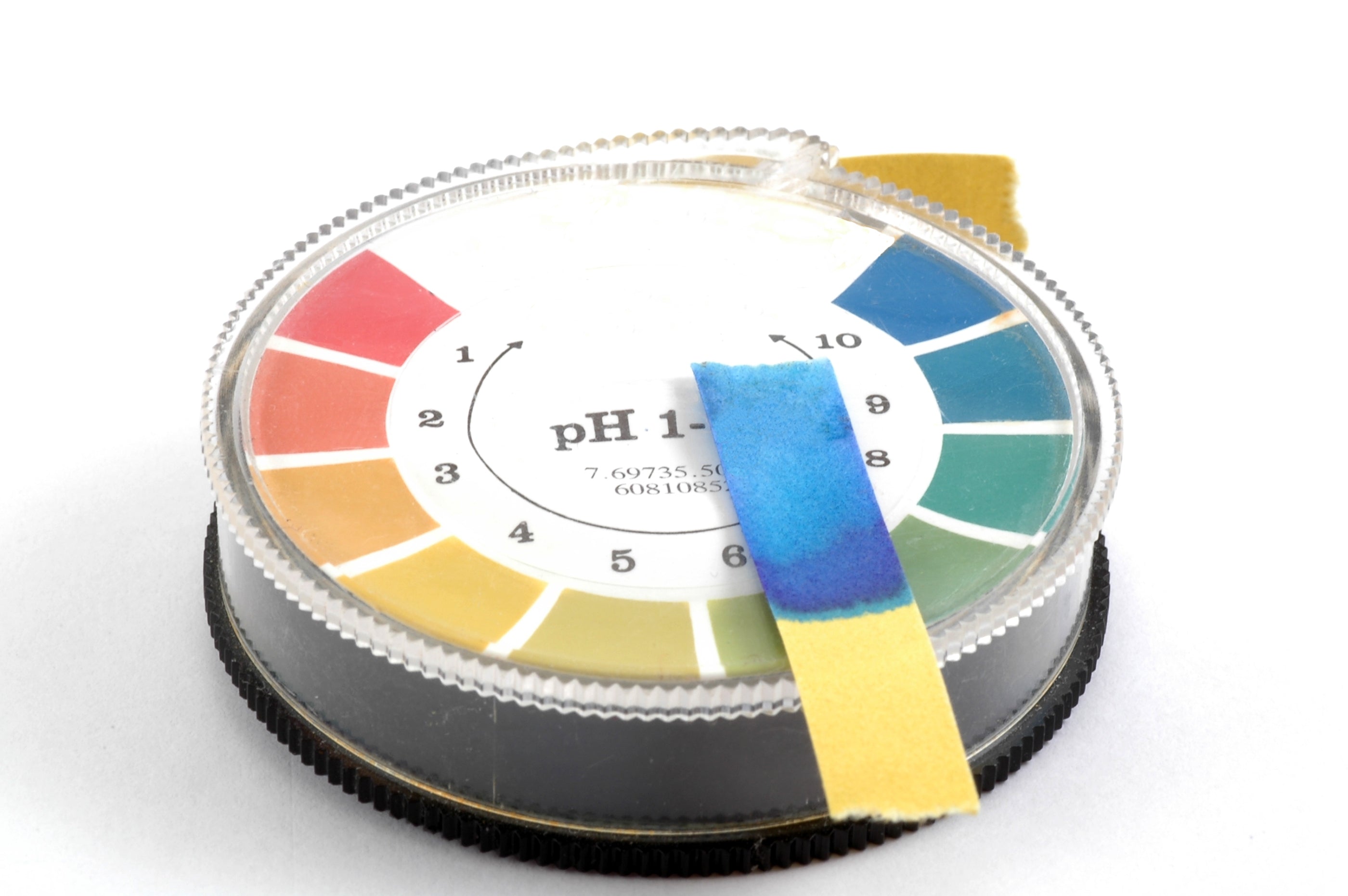Setting Up a Grow Room - A Step-by-Step Guide
Everything You Need to Know When Setting Up a Grow Room
Okay, so you’ve tried growing plants hydroponically, and you want to take things to the next level by setting up a grow room. But the whole set up process seems so complicated, and you probably don’t even know where to start. No need to worry, if you want to set up a grow room, you’ve come to the right place. In this article, we’ll cover everything that goes into setting up a grow room step by step.
If you want to set up a grow room, the good news is that your grow room setup can be very simple and inexpensive, or you can outfit every detail to be as efficient and convenient as possible. The best part about setting up a grow room is that every single decision from bigger ones, like the actual room you want to use, to smaller details, like what grow lights you want to use, is yours to make. Below we’ll cover everything you need to set up a grow room of your own, with options to take you from basic to fully outfitted.
There are essentially 5 steps to setting up a grow room:
- Step 1: Find a suitable setup space
- Step 2: Choose how to configure your space
- Step 3: Make your space light tight
- Step 4: Get good light coverage with grow lights
- Step 5: Set up a ventilation system
Let’s take a look at each of these steps in more detail.
Step 1: Find a Suitable Space for Your Setup
Consider If You Have Enough Space
You can use almost any space for your grow room setup. You can convert a whole room, or you can use a grow tent, or you can even use a cupboard for your setup.
Electricity
You will need power for your grow lights, water pumps, and so on, so you need to have at least a couple of normal double wall sockets. You can always use an extension lead if you need to.
Water
Ideally, you need to use filtered or distilled water in your hydroponic system. You can either install a reverse osmosis filtering system that will filter your tap water, or you can buy filtered or distilled water. You will need to top up water in your reservoir from time to time and change it completely every 2–3 weeks, so consider how easy it is to get water to your grow room.
Noise
Lights, pumps, and fans can make some noise. Keep it in mind when setting up your grow room and make sure it won’t disturb you.
Flooring
You don’t want to have any carpeting in your grow room because it will hold moisture, house bugs, and bacteria. Concrete floors are commonly used in grow rooms because they are relatively cheap and easy to clean. You can cover your floors with water-resistant materials, like cementitious urethane, and while it can cost quite a bit, it’s definitely worth it because it will make it much easier to clean your grow room and you won’t have to worry about spills too much. You can also use pond liner or another type of rubber sheeting that repels water.
Step 2: Choose How to Configure Your Space
Once you’ve found a suitable space, you need to work out how to configure it. You can convert an entire room into a grow room, you can use a grow tent, or you can convert an enclosed space, like a cupboard.
Converting a whole room will give you the most space, but it will also take the most work, as you will have to make it light tight, install a ventilation system, and you will need lots of grow lights.
Having a grow tent will give you less space, but it’s much easier to control the optimum climate, minimize light loss, and prevent pest infestations in a grow tent than in a grow room.
Converting an enclosed space will likely give you even less space than a grow tent, and it will limit you in terms of choosing grow lights because of the heat they produce, but it’s still a good option if you have limited space.
Step 3: Make Your Growing Space Light Tight
You will need to make your growing space light tight to prevent the light from your grow lights escaping and also prevent the natural light from interfering with your lighting cycle. If there’s a small window or natural light source in your grow room, block it off or light trap the area with total blackout reflective sheeting.
Ideally, you should paint your walls white or cover them with reflective sheeting. Reflective sheeting is more expensive than simply painting the walls, but it does two great things. Firstly, it stops light escaping. Secondly, it keeps natural light out of your setup. This way, it doesn't interfere with your lighting cycle.
There are different types of reflective sheeting, like Orca and Reflex Diamond. The shinier it is, the better.
You can also paint your walls white. Flat white paint can reflect as much as 85% of the light that hits it. Look for the light reflectance value (LRV) ratings on cans of paint.

Step 4: Get Good Light Coverage with Grow Lights
When growing indoors, it’s important to match the natural sunlight requirements for your plants. This can easily be done by using grow lights.
Outdoor gardens require around 8 hours of direct sunlight per day. Artificial lighting for a hydroponic garden provided by grow lights should imitate the direct and indirect lighting requirements for your plants. Different plants have different needs, but typically you would need your system to have at least 14–16 hours of artificial light, followed by 8–10 hours of darkness.
Choosing the right grow lights for your hydroponic garden can be a daunting task, as there are a lot of different options on the market. Some grow lights may be better or more efficient depending on the size of your system and the types of plants you’re growing. The pros and cons of different grow lights will be covered below to help you choose the right grow lights for your hydroponic garden.
Different Types of Grow Lights
All hydroponic lighting systems have 4 different components: bulbs, a reflector hood, a remote ballast, and a timer. Let’s take a closer look at each of these components.
Bulb
The most common types of bulbs in hydroponic grow lights are LED, fluorescent, metal halide (MH), and high-pressure sodium (HPS).
LED grow lights are one of the newest forms of hydroponic lighting. They are one of the most energy-efficient types of lighting. LED grow lights generate far less heat than MH or HPS lights, which makes them good for small growing spaces, and it means that you won’t have to worry about cooling as much. Plants need different light spectrums at different growth stages, and some LED grow lights can provide different light spectrums, unlike other types of grow lights, which makes them really versatile. You can purchase RGB or multi-colour LED grow light kits, and they can provide any spectrum of light by “mixing” the primary colours. This means you can use the same LED grow light at different growth stages, so you won’t need to switch bulbs during the plants’ growth. LED grow lights are highly energy efficient, and the bulbs can last for years (in comparison to MH and HPS grow lights which may only last one season).
Fluorescent grow lights give off a blue hue, and they are great for starting seeds and the beginning stages of seedlings. They have a low heat output, which allows seeds to grow without getting burned or drying out. They also work well for growing salad greens and flowers.
They are two types of fluorescent grow lights: compact fluorescent grow lights (CFL) and T5 fluorescent grow lights. Compact fluorescent grow lights look like energy-efficient bulbs you would use at home, and they use a typical bulb socket. They come in a variety of colors and different wattages. The main benefit of compact fluorescent grow lights is that CFL bulbs are easy to find. You can buy CFL bulbs even in some grocery stores. Due to their compact shape and size, you can place them in interesting ways and deliver light to parts of plants that would typically be shaded. You can use a lighting fixture, or you can provide individual sockets for bulbs and arrange them in a way you see fit. Compact fluorescent grow lights can fit in small spaces, so if your growing area is not that large (if you’re using a cupboard as your growing space, for example), compact fluorescent grow lights might be a great choice for you. They also produce very little heat, so you can place them closer to plants and won’t have to worry about cooling your growing area.
T5 fluorescent grow lights look like tubes. T5 comes from two attributes of these bulbs: they are tubular (T) and they have a 5/8” diameter (5), hence the designation T5. T5 fluorescent grow lights usually come in an array of bulbs that are arranged parallel to each other in lighting fixtures containing multiple bulbs. Since T5 fluorescent grow lights require having a fixture to place the bulbs in, they will need to be hung in a similar fashion to MH or HPS grow lights. However, they produce very little heat and can be kept only a few inches away from your plants without causing harm. T5 fluorescent grow lights run very cool and are very energy efficient, just like CFLs, so you can keep them close to your plants and won’t have to worry about exhausting heat from your growing area. T5 fixtures can be rather bulky, so if you have a small growing area, it might be difficult to fit T5 fluorescent grow lights into it, and compact fluorescent grow lights would be a better choice.
Metal Halide (MH) grow lights are solid all-around lights. They provide the blue/white light spectrum, and they imitate the sunlight during the summer months. They are mainly used for plants that have just finished sprouting and are now entering the growing or vegging stage. They also work well for long-day plants that require more light. They do produce quite a lot of heat, so you’ll need to keep them further away from your plants and have proper ventilation to extract the heat produced by them. You can get ceramic metal halide grow lights, which are a variation of MH grow lights with a small amount of high-pressure sodium (HPS) added into the mixture. They are also called light emitting ceramic (LEC). The main advantage of ceramic metal halide grow lights is that they produce a more balanced spectrum that hits almost every sweet spot for your plants, and they’re also more energy efficient. Another advantage of ceramic metal halide grow lights is that they are more resistant to breakdown, so they last a lot longer and don’t lose their efficiency as fast as regular MH or HPS bulbs.
High-Pressure Sodium (HPS) grow lights give off an orangey-red hue, imitating the warmer colors of fall, and they work best for flowering and fruiting stages of your plants. Typically, you would use MH lights when your vegetables and fruits are starting to grow, and you would switch to HPS lights when your plants start flowering. Just like MH grow lights, HPS grow lights produce a lot of heat, so you need to keep them further away from your plants and also have a proper ventilation system in place.
Choosing the right grow lights for you will depend on your grow room setup. MH and HPS grow lights are a popular choice for many hydroponic growers. They are cheaper than LEDs, but they are less energy-efficient, they generate a lot of heat, plus they lose their effectiveness over time and their lifespan is shorter, so they need to be replaced more often (usually every year). They are only suitable for larger grow rooms because you’ll need to keep them further away from your plants due to the heat they generate. Even though the initial expense is higher when buying LED grow lights, they can last for years, unlike MH or HPS grow lights which may only last one season. LEDs can also fit a variety of spaces, even smaller ones. Compact fluorescent grow lights are great for small spaces, like cupboards or grow tents, but they are not great at covering larger spaces, like whole grow rooms.
Light Fixture
Light fixture is the main structure of the lights. It holds the bulbs, sockets, electrical wires and other components.
Reflector Hood
Reflector hood is a reflective casing around the bulb. It reflects the light down onto the plants at multiple angles, which helps increase the effectiveness of the bulbs and distribute the light more evenly.
Remote Ballast
The ballast is the power box that powers the grow lights. Ballasts can be sold as a part of the lamp assembly, but these can be too hot and heavy. Remote ballasts work much better for home systems. They are usually the most expensive element of the lighting system, so make sure to keep your remote ballast off the ground so that it never gets wet in case of a flood or leak. I’d suggest buying the ballast as a set with the bulbs because their wattage must match.
Timer
Plants need darkness just as much as they need light, so it’s important to get a timer for your grow lights. It should be heavy-duty and grounded, and timers can be either manual or digital.
Grow Lights Wattage
A rule of thumb is to have 25–50 watts per square foot of grow space. This means a 1000-watt LED grow light can cover 20–40 square feet. The efficiency of your lighting system is the key to increasing the wattage. LED grow lights are the most efficient lights, and a 500-watt LED light can provide equivalent ratings to a 1000-watt MH or HPS light.
Lighting Needs
Different plants have different lighting needs. For instance, short-day plants, such as strawberries, cauliflowers, and chrysanthemums, will not flower if they are exposed to light for more than 12 hours per day. Long-day plants, such as lettuce, potatoes, and spinach, need up to 18 hours of light per day. Day-neutral plants, such as corn and eggplants, are more flexible and they can produce fruit no matter the level of light exposure. It’s best to give them around 14 hours of light per day for optimum growth.

Step 5: Set Up a Ventilation System
Air is invisible, which is why we often forget it exists. However, we cannot live without it and neither can plants for that matter. So, if you’re growing indoors, you’ll need to think about grow room ventilation. Without proper ventilation, your plants won’t grow well and you’ll get poor harvests.
Grow room ventilation is essentially a system that ensures a continuous flow of air between the outside and your indoor growing area. It can also include mechanisms for air circulation inside the grow room.
Why Your Grow Room Needs a Ventilation System
Maintaining Optimal CO2 Levels
Plants need carbon dioxide to thrive, and if you keep them in a closed environment with no supply of fresh outside air, they will soon run out of CO2. Grow room ventilation systems help to maintain the perfect CO2 levels for plants. A proper ventilation system will help boost the growth and increase yields from your plants.
Heat Management
Different plants grow best in different temperatures, so maintaining optimal temperature for your plants is crucial for their growth. Outdoors, plants get heat from the sun and winds provide some cooling. When you grow indoors, plants will get heat from grow lights, but they won’t have a chance to cool down if there is no wind or air circulation. Also, keep in mind that some grow lights produce more heat than others. For example, metal halide (MH) and high-pressure sodium (HPS) grow lights produce much more heat than fluorescent or LED grow lights. Having a ventilation system in place will help extract warm, stale air and bring in cool, fresh air that your plants need to grow and thrive.
Humidity Management
Plants are great humidifiers. All day long they expire water vapor. However, if they grow inside, this can become a problem. If there is no proper ventilation in the grow room, humidity will rise rapidly, and humidity attracts a lot of pests and insects. High humidity is also not good for most plants, unless they are tropical species. A proper ventilation system will help control humidity because it will dump out stale air and bring in fresh air from the outside.
Pest Control
Stagnant and humid air has negative impact on all surfaces in your grow room, especially the growing medium. In high humidity, the growing medium will remain damp and humid, and this can attract fungi, mold, mildew, and pests. A ventilation system will help control humidity, and therefore will reduce the risk of fungi, mold, mildew, and pests. Still air makes it easier for pests to fly around, so having fans maintain a breeze in your grow room will make it more difficult for them to reach your plants.
How to Ventilate Your Grow Room
At a very minimum, you will need an exhaust fan to remove the old air, and an oscillating fan for air circulation inside the grow room, and an opening for bringing in fresh air, which could be a hole or an open window, but it should have a net to keep away bugs and filter out large particles.
Exhaust Fan
Exhaust fans will remove hot, humid air from your grow room. They are typically used with ducting to channel the old air away from the grow room.
Oscillating Fan
These can be a simple pedestal fan. They are needed to create a gentle breeze inside the grow room and keep the air circulating.
Passive and Active Intake Systems
With a passive intake system, you will only have an exhaust fan to remove the old air, and fresh air will enter through an intake hole or a duct due to the negative pressure created inside the room. The intake hole needs to be much larger than the exhaust hole or duct for the ventilation system to be effective. You can also use multiple intake holes to provide adequate airflow.
An active intake system will have an additional fan, which is called the intake fan. It is used to bring in fresh air from the outside through the intake vent. In most cases, intake and exhaust fans should be the same strength, or the intake fan can have a 15–20% lower CFM (cubic feet per minute) rating than the exhaust fan. So, if you can’t have large intake holes in your grow room, you can consider an active intake system.
Calculating Fan Strength
Calculating fan strength will require a little bit of maths, but it’s nothing too crazy. Fans are rated by CFM (cubic feet per minute). To figure out the CFM you need, you need to know the dimensions of your grow room and the exhaust efficiency.
First, you need to calculate the total volume of your grow room by multiplying the length by width by height in feet. This is the volume of your room in cubic feet. You need to divide by 3 because you want your fan to complete exchange the air every 3 minutes. This is your baseline CFM rating, but this is the very minimum. You will also need to consider various factors that will affect the efficiency of your exhaust fan.
The efficiency will vary depending on a few different factors, but the most important ones are the age and make of the filter, the length of the duct between the fan and filter, your grow lights wattage, and the climate you live in.
Most ventilation systems use a carbon filter on the exhaust side. Filters also have CFM ratings, and your filter CFM rating must not be lower than your CFM fan rating. Otherwise, your fan will not be able to move the air as efficiently, and your filter will not filter out all the smells from the exhaust air. You need to add 20% to your CFM rating if you use a filter in your system.
Next, you need to add 10% for every 10 feet (3 m) of ducting. And you also need to add 10% for every 1000W of your grow lights wattage. If you live in a hot climate, you can add an additional 25%, and if you live in a hot and humid climate, add 40%. Once you’ve done all the calculations, you will get the minimum CFM rating for your exhaust fan. If you decide to go with an active intake system, you can match the exhaust fan CFM for your intake fan, or you can even reduce it by 15–20%, and there is no need to have an intake fan with a higher CFM rating than the exhaust fan.
For more great content check out the Proponics YouTube channel below!

By Max Barnes
Max Barnes is a long-time homesteader and author. Max grows the majority of his own food year-round using a variety of different methods, including hydroponics. Hydroponic gardening plays a huge part in his homestead and self-sufficiency goals.




